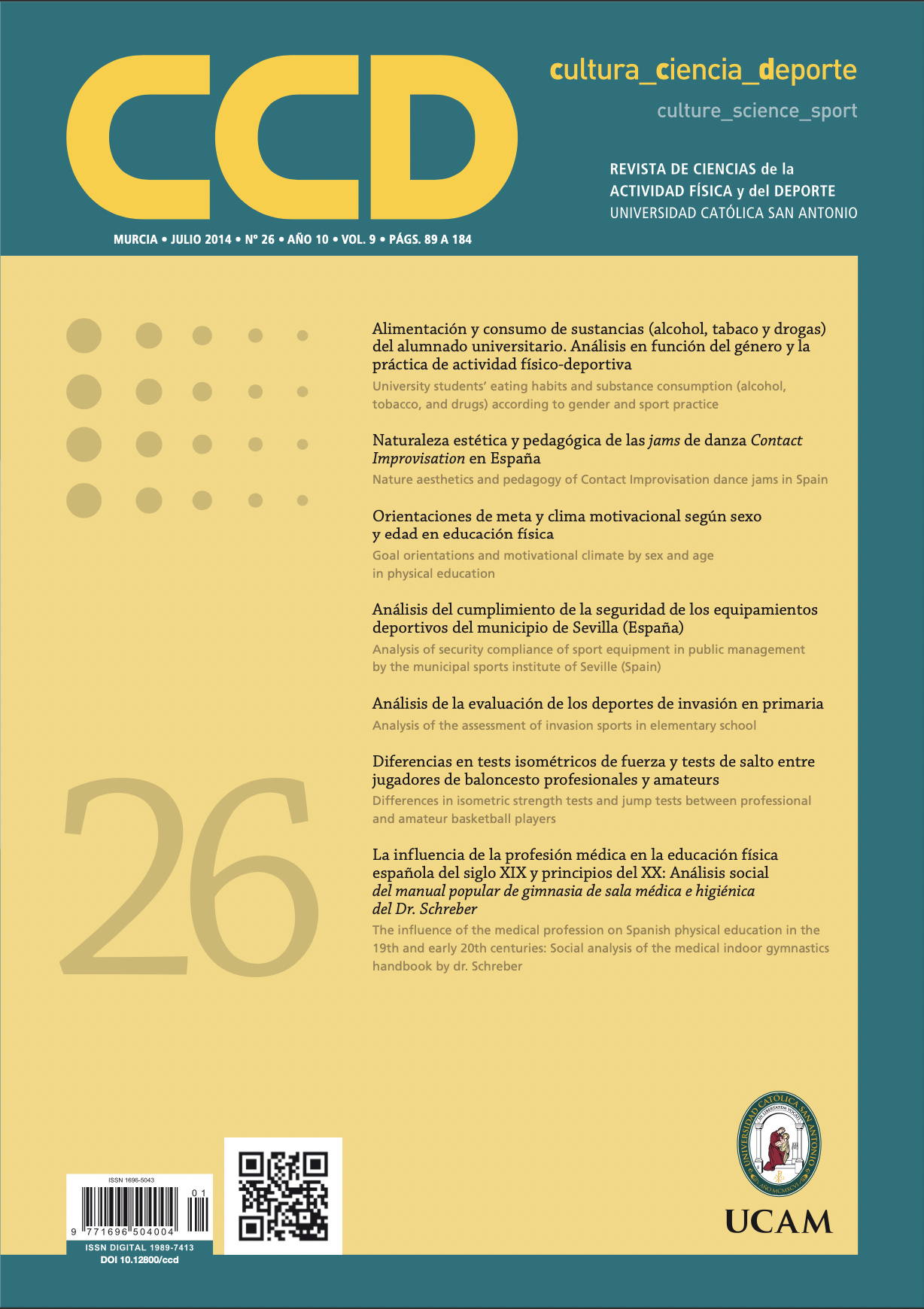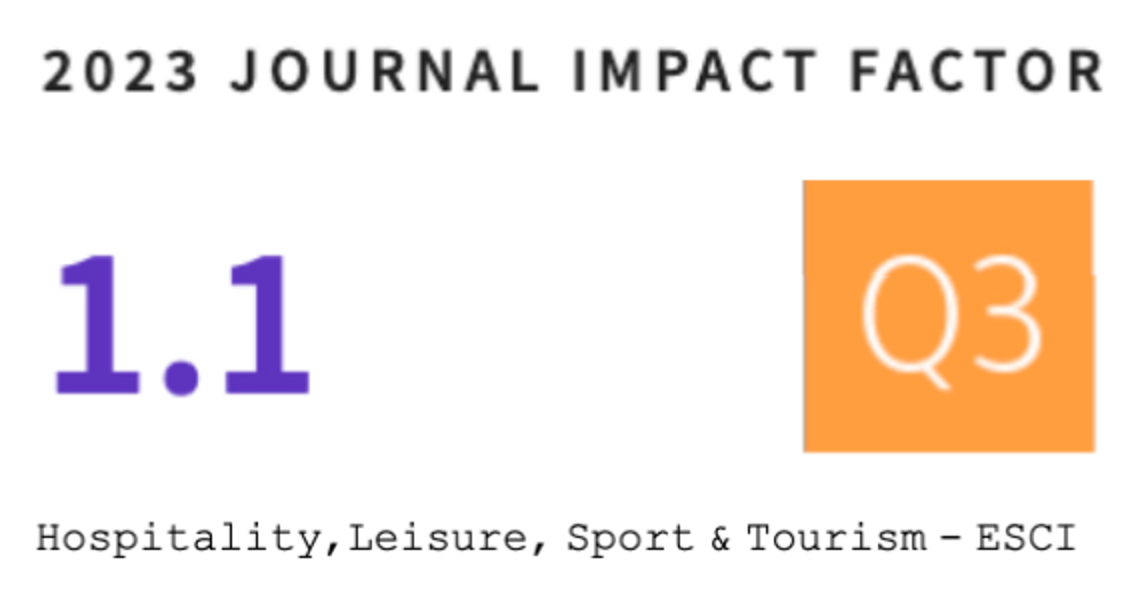Orientaciones de meta y clima motivacional según sexo y edad en educación física. (Goal orientations and motivational climate by sex and age in physical education).
DOI:
https://doi.org/10.12800/ccd.v9i26.430Abstract
http://dx.doi.org/10.12800/ccd.v9i26.430
Esta investigación analizó las diferencias en función del sexo y la edad en el clima motivacional percibido y las orientaciones de meta de estudiantes en sus clases de Educación Física. Para ello, se administró un cuestionario compuesto por el Cuestionario de Percepción de Éxito en el Deporte adaptado a la Educación Física y por el Cuestionario de Orientación al Aprendizaje y al Rendimiento en las Clases de Educación Física. La muestra estuvo compuesta por un total de 846 estudiantes de secundaria de 12 a 19 años. Se realizó análisis de correlación y de varianza multivariado (MANOVA 2x3). Los resultados mostraron que existe una relación positiva y significativa entre las orientaciones de meta y el clima motivacional percibido por el alumnado. Las chicas presentan valores mayores de orientación al ego y de percepción de un clima implicante al rendimiento que los chicos. Y las únicas diferencias por edad se dan en el clima motivacional implicante al rendimiento. Como principal conclusión señalar que el docente debe prestar mucha más atención al clima motivacional creado en clase conforme el alumnado va creciendo, fomentando un clima implicante al aprendizaje. Asimismo tendrá que buscar estrategias que alejen a las chicas de estereotipos tradicionales y las refuercen socialmente.
Palabras clave: ego, tarea, motivación, educación.
===
Abstract
This research has analysed differences by gender and age on perceived motivational climate and goal orientations of students in their Physical Education lessons. For this, a questionnaire composed of the Perception of Success in Sport adapted to Physical Education and the Learning Orientation Questionnaire and Performance in Physical Education Lessons was administered. The sample consisted of a total of 846 high school students from 12 to 19 years of age. We performed correlation analyses and multivariate variance analyses (MANOVA 2x3). The results showed that there is a significant positive relationship between goal orientations and perceived motivational climate by students. The girls presented higher values of ego orientation and perception of a performance climate than the boys. The only age differences exist in the performance motivational climate. As the main conclusion, we note that teachers should pay much more attention to the motivational climate created in class as the students get older, fostering a learning climate. Also, the teacher needs to find strategies that keep girls away from traditional stereotypes and reinforce them socially.
Key words: ego, task, motivation, education.
Downloads
How to Cite
Issue
Section
License
The authors who publish in this journal agree with the following terms:
- The authors retain the copyright and guarantee the journal the right to be the first publication of the work as well as licensed under a Creative Commons Attribution License that allows others to share the work with recognition of the authorship of the work and the initial publication in this journal.














